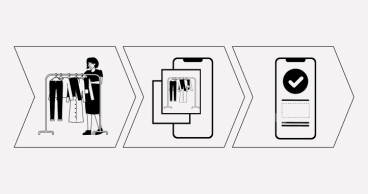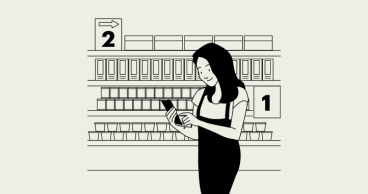Qvalon Blog article content
By: Jul Domingo
When walking into a store, what are the first things you notice that suggest a pleasant shopping experience?
For many, effective visual merchandising displays are key to creating an environment that consumers want to shop in.
And making the effort to create a positive first impression definitely pays off.
Visual merchandising displays influence consumer purchasing decisions and can increase sales from 80% to a whopping 478%.
The first thing you need to do is determine what works best for your customers. We’ve laid out 17 effective types of retail displays that you can tap into. Once you've decided on your retail display strategy, a tool is necessary for tracking it.
What is visual merchandising?
Visual merchandising involves the use of eye-catching retail displays to represent your brand and your products. Both online and offline retailers can use this strategy by tailoring their marketing spaces to make the items more accessible and irresistible to buyers.
We’ll focus mostly on visual merchandising for retail stores.
In retail stores, particularly, merchandising has an impact on customer evaluation and interest. The two primary goals once the customer sets foot in-store are: catch their attention; and have them buy the products.
These goals are made possible by enhancing the store's overall aesthetic using retail display techniques.
What is a retail display?
A retail display refers to any of your store fixtures that showcase your products and offers to the public. They revitalize your shop's weak spots to increase foot traffic, engage customers, and improve the overall in-store experience.
The right visual merchandising display (VMD) requires:
- create a window that draws attention
- design an environment that evokes an emotional response
- Guide customers in their shopping journey
- Convey a brand promise

The best types of visual merchandising displays to invest in
The layout and types of retail displays will differ from one retail industry to the next, so we'll cover the most common retail display types that can be adapted to suit your business needs.
We’ve divided them into:
- Standalone and POP displays
- Shelving displays
- Clothing and furniture displays
Get inspired by these real-life visual merchandising examples, which will put you in the mood to experiment.
Standalone and POP displays
Standalone or point-of-purchase (POP) displays are off-shelf displays designed to attract customers to a particular set of products in your store. They either hold or are closely placed near the items that require more attention.
Here are the types of display in visual merchandising for standalone and POP store fixtures you can choose from.
Freestanding displays
Freestanding displays are portable racks designed to draw attention to specific brands that would otherwise go unnoticed. The size of these displays is typically at eye level with shoppers.
Freestanding visual merchandising displays are perfect for those who sell a variety of products like specialty stores.
To maximize this retail display, place them in high-traffic spots that don’t impede the customer flow. Green Spoon Sales, an organic retail store, uses this type of retail display to increase visibility and sales for this specific brand.
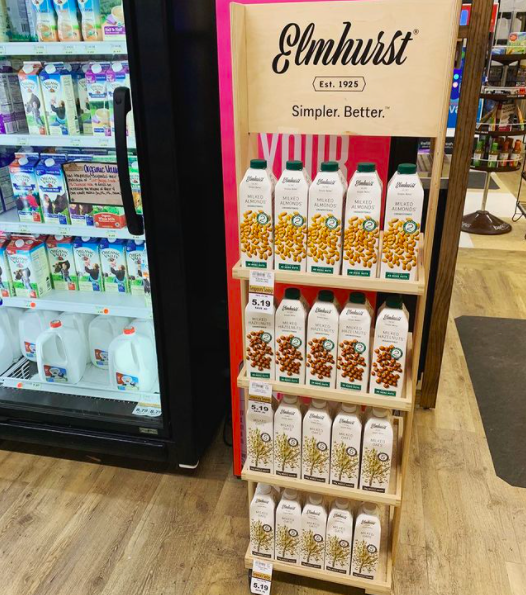
Dump bins
Dump bins hold smaller, non-breakable items, such as stuffed animals, snack items, and more. These containers are also less organized and easier to maintain.
You’ll often see this type of retail display housing, and sale items on big-box stores like Walmart.
Use dump bins to get rid of your slow-moving items or to encourage extra purchases of new products. Position them anywhere near the counter or next to the aisles to ensure that all customers can run into them.
You can also add themes and display them as a focal point. Schnucks, a grocery retailer, does exactly that to encourage sales during Halloween. See their pumpkin display below:
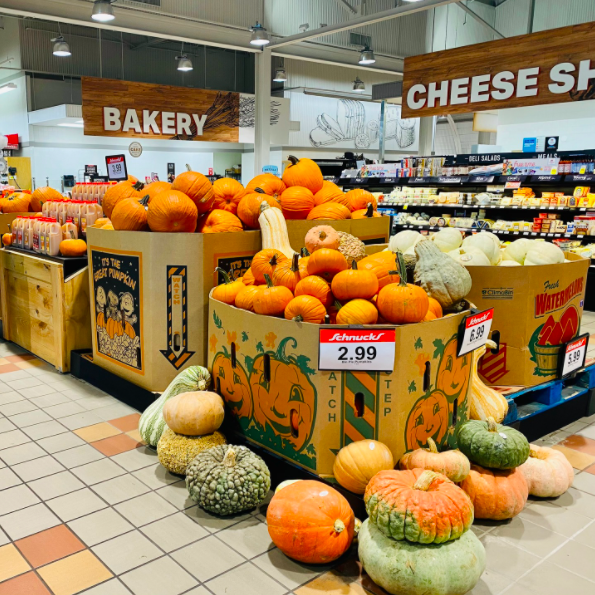
Entryway displays
The storefront is your retail display’s hotspot because that's the customers' first point of contact with your shop. It’s also your key to attracting more visits, especially if you have competitors nearby.
Use your best-sellers, time-limited promos, or seasonal items as the subject of your entryway displays and put them on a tiny table near the doorway. Add outdoor designs like benches and mirrors if feasible.
Check out these outdoor display techniques from The White Stitch, a women's clothing boutique, to woo passersby with their discounted items.
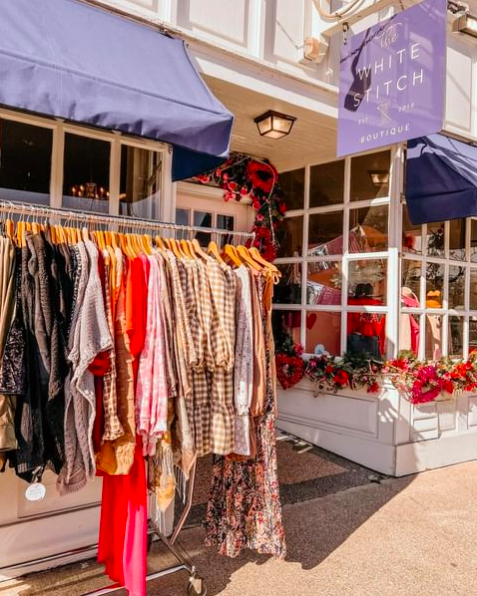
Window displays
Window displays are an assortment of products, fixtures, and decors placed right next to the store window. These display techniques are a silent marketer, especially for those who are new to your brand.
Follow a theme, add lighting, create a focal point, and ensure balance (a.k.a. avoid too much clutter!) on your window displays. The overall design also has to match your target buyers' preferences.
Here, Chalk Hills Bakery's window displays reflect their indoor visual merchandising displays. It's a clever way to extend their brand message to whoever wanders around their bakeshop’s corner.
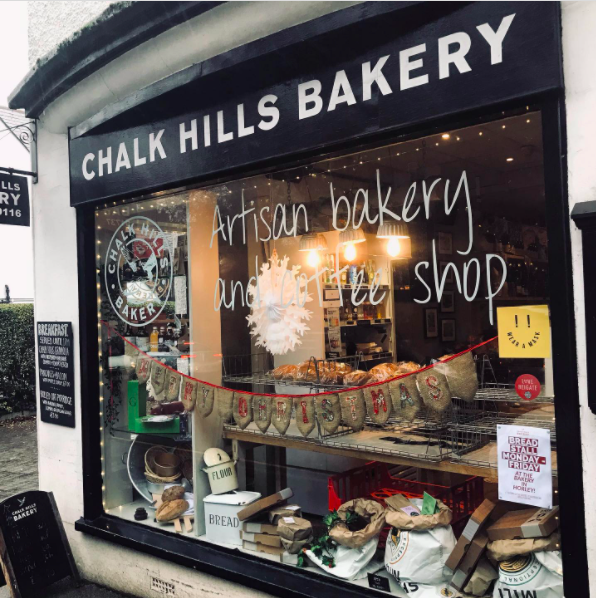
Digital pop displays
If a traditional POP display can already influence the buyers' purchasing decisions, then a digital one can surely offer more. These visual merchandising displays use digital media to advertise products, typically among electronic stores.
With this retail display, you can let the looping digital signage or product video do the selling for you. All you have to do is place the LCD media players near or on the shelves (if they aren’t built-in) where the customers usually go.
Meanwhile, the Amazon Salon in UK redefined the beauty salon retail with this augmented-reality app that lets customers try different hair styles and colors.
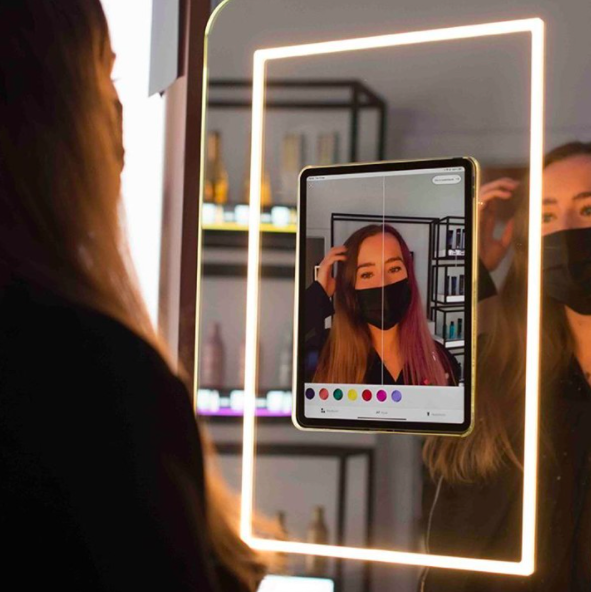
Banner displays
Banner displays can be standees, ceiling, or pole banners used to announce promotions or new product releases. It's a retail display that’s flexible for both inside and outside the store, so almost every shopping mall retail outlet has them.
In outsourcing your banners, look for a durable, weather-resistant material to maximize them for long-term use. Use the appropriate colors to attract and spark your buyers’ interest.
For your reference, here’s a sales promo banner from a Barnes & Noble bookstore outlet.
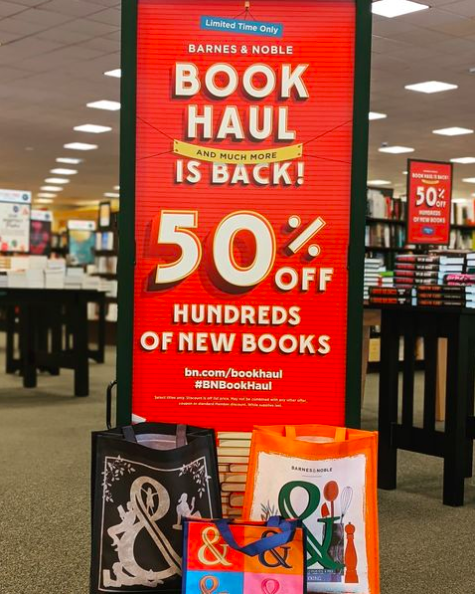
Display tables
Preparing a display table is one of the most versatile types of retail displays. It only requires a retail table, a set of products you want to highlight, and a knack for display techniques. They’re most common in specialty stores, especially for accessory and apparel brands.
Your retail tables must meet the buyer's eye level, so ideally, they should be at least 4ft. to 5ft. Experiment with your visual merchandising displays, but don't forget to rework them from time to time.
You won’t run out of design ideas for this because you can always follow seasonal themes. Same here with The Alphabet Gift Shop who cross-sells their items based on the occasion. In this case, a Father’s day table display.
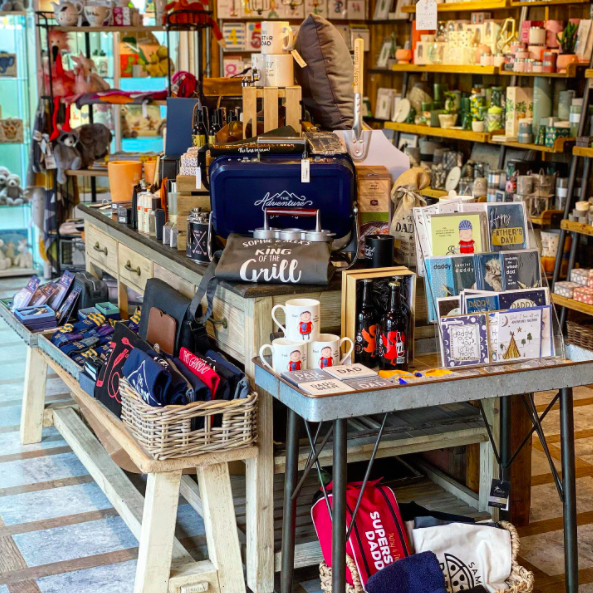
Gondola displays
Another versatile retail display is the use of portable gondola displays for items of mixed sizes. It can be single-sided, two-sided, or even round-sided. It can maximize a small space making it fitting for hardware and pet stores.
Add hanging pegs and hooks to make the most of your gondola. For shelving up diverse products, try to follow these neat display techniques made by a local pet shop, Puppies & Kittens.
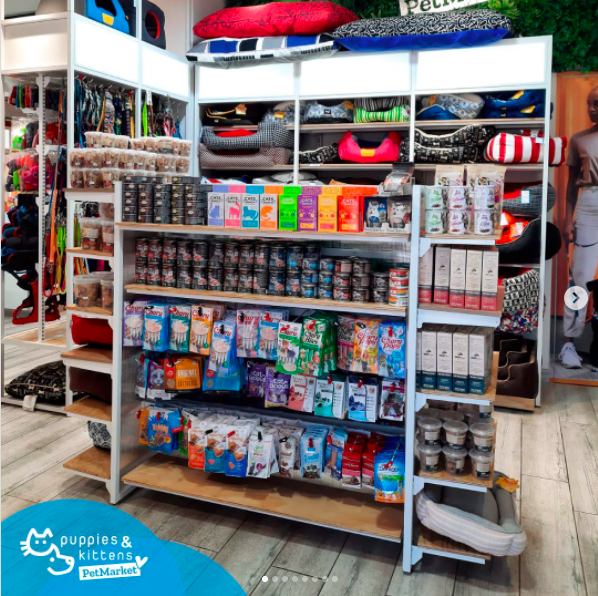
Immersive retail displays
Immersive displays aim to connect personally with your customers. And it’s becoming more feasible today now that the retail industry is closely approaching the full-world alternate reality a.k.a. the metaverse. Nike, for instance, created an immersive 3D world called Nikeland that comes to life at Nike’s House of Innovation in NYC.
The immersive displays can be techy or just simple ornaments depending on the industry. A clothing store can invest in virtual fitting rooms, while a restaurant can simply enhance its store ambiance.
Simply relate your brand story to how customers are using the products in their daily lives. For your inspiration, here's a chocolate retail shop called Tallipihan Suklaapuoti.
Look at how the store decors turn their traditional sweet shop into a hidden winter wonderland. That's immersive visual merchandising displays doing the magic!
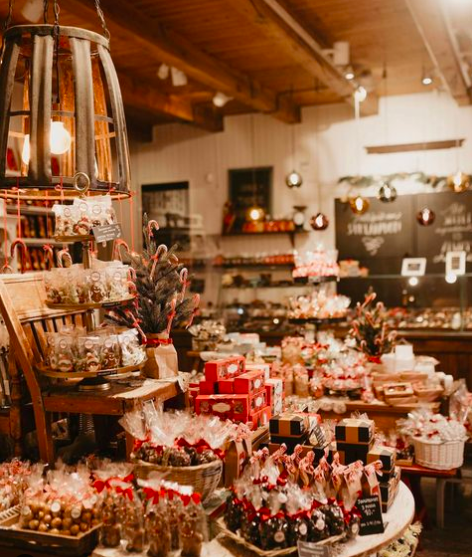

Apparently, the best visual merchandising displays don't end with the off-shelf standalone fixtures. So for these next types of retail displays, let’s proceed to the store shelves must-haves.
Shelving Displays
In contrast to standalone and POP, shelving displays stay right on or next to the store shelves. These types of retail display help customers with in-store navigation and product browsing.
Use any of the following visual merchandising displays to jazz up your store shelves.
Shelf talkers
Browsing in a specific aisle doesn't guarantee that the customers will find interest in a specific product. But you can let shelf talkers do the sales talk. These display techniques are famous among grocery stores to show off the best product options.
To make the tags visible across the aisle, ensure that they're placed perpendicular to the shelves. Don't forget to use bright colors as well to improve readability.
Here's a great example of sticking shelf talkers from Schnucks' grocery outlet.
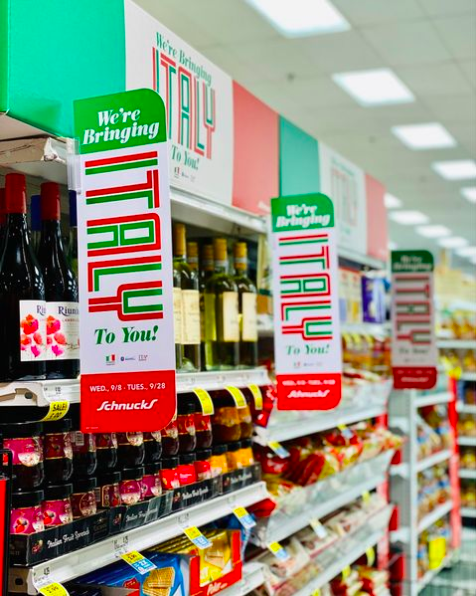
Clip strips
Another sticking retail display you can add to your shelves is a clip strip. Clip strips are metal or plastic strips used in advertising several small items without occupying too much shelf space. Because of the limited area in convenience stores, you can usually see these visual merchandising displays lingering around the shop.
Cross-sell using your clip strips by placing them near their complementary products. For example, you can place a strip of shaving razors in the hygiene section. Otherwise, put them on a shelf near the counter to stimulate your shoppers’ impulse buying tendencies.
US Market, a convenience store installed in a petrol station, makes the most out of its shelf by clipping snacks in this example:
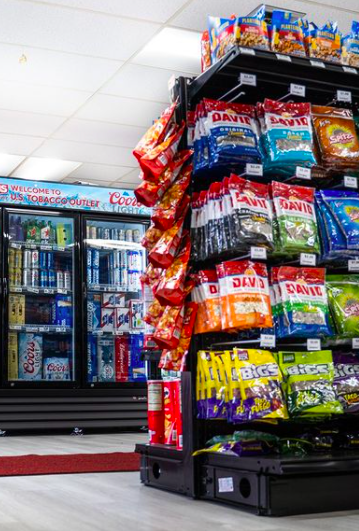
Header cards
Header cards are creative labels placed on shelves to highlight a particular set of products. The print on this retail display can include brand logos, how-to product guides, or exclusive redeemable perks. Most outlets with a diverse product mix employ these display techniques, such as hypermarkets.
Header cards have to attract attention, so they must be simple yet creative. Use this to showcase what sets your products apart from your competitors.
Here's how Whole Foods Market, an organic food retail store, uses header cards to emphasize their brand advocacy (i.e., selling local and organic products).
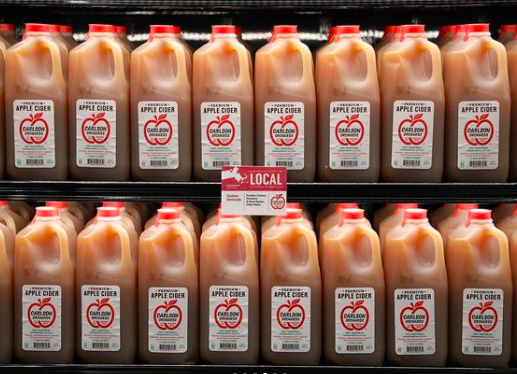
Glorifiers
Glorifiers are tiny platforms that give a specific product a striking visual appeal. You can set these visual merchandising displays on a store shelf, on a countertop rack, or on a separate table next to the shelf that contains similar items.
These types of retail displays are ideal for advertising shoes, eyeglasses, and bottled products. Note that not all items need a glorifier, so determine which only among your products has to be set apart.
In this example, Héritage Berbère Marrakech only spotlights this particular scent from their entire perfume collection.
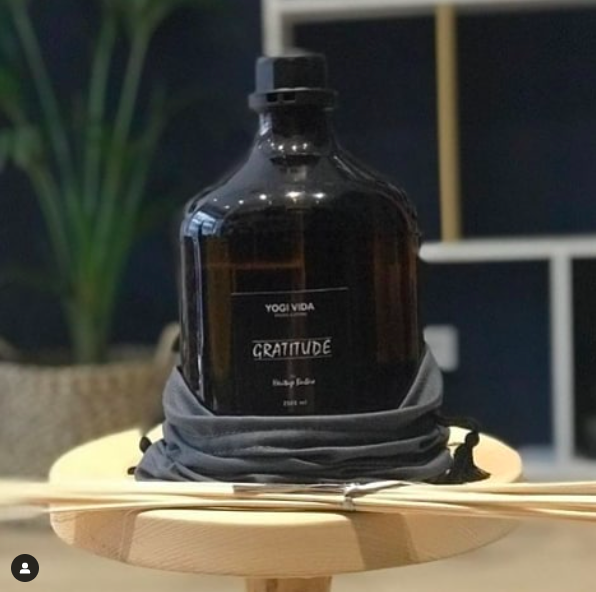
End caps display
End caps retail display refers to the racks positioned at the two endpoints of every aisle in your store. They're high-traffic spots because customers always pass through them as they browse around. So might want to show off your promos and discounted items there to increase their purchases.
To get more favorable results, prioritize stocking up complementary products that are suitable for cross-selling. Be creative in shelving them up.
Erewhon, healthy food retail, has compiled all of those display techniques in this example—promotions, cross-selling, and creativity.
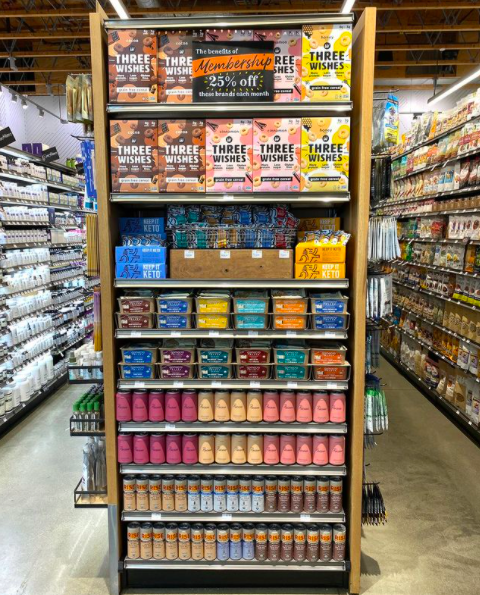
The displays above are often used by retail businesses in the food and beverage industry. But for these last three types of display in visual merchandising, we’ll be focusing on retail clothing and furniture outlets.
Clothing and furniture displays
The off-shelf and on-shelf displays above already apply to clothing products. For furniture, however, that’s a different story. Nevertheless, you can even level them up by using display techniques that are specifically designed for them.
So if your business falls into either of the two categories, check out these types of retail displays to help you boost your sales.
Mannequins displays
Mannequins allow customers to picture how various items would look on them. Talk about advertising without even talking to your prospective buyers—that's a visual strategy.
Putting mannequins in your window displays can increase store traffic according to a study. So ensure that they’re the first thing your customers see when they enter the store by placing them on eye-level areas.
Style them with the right amount of clothes and accessories and don’t overdo it. Look at the balance of this women's fashion retail display from Tally-Ho.
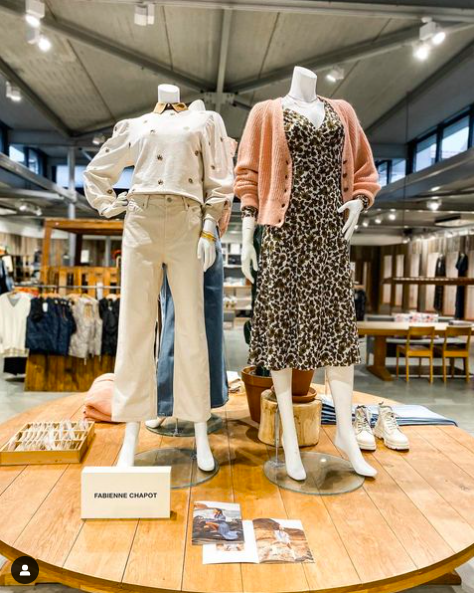
Garment racks
The clothes and accessories you don't put in your mannequins, you can still place aesthetically on garment racks. These racks come in various shapes, colors, and sizes, so only use those that match your store design.
Pro-tip: Apply color display techniques and use uniform hangers in a single rack.
Here’s another example from Tally-Ho. Observe how they style the garment rack by symmetrically grouping and placing the clothes in order. Aesthetically pleasing, right?
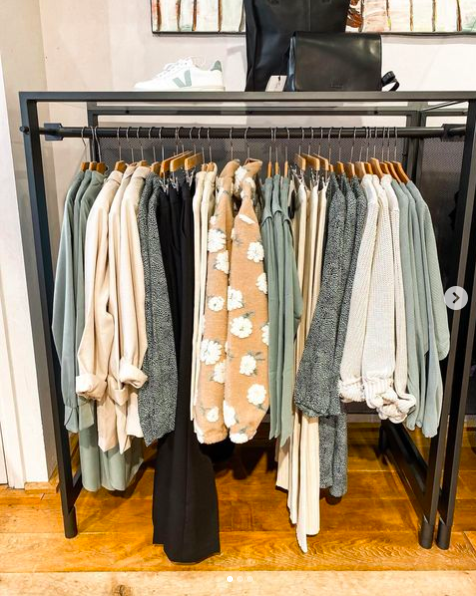
Try displays (Touch, feel, test)
If food stores offer free tastes and clothing outlets have fitting rooms, then furniture shops have try displays. It's an opportunity for customers to touch, feel, and test the quality of the actual furniture.
The sense of touch is so important in fabric retail to bring customers a 100% cognitive experience of the product. Furniture is a long-term investment, after all, so they have the right to know that what they're purchasing is really worth it.
Below, you can see how Tides Home & Garden’s interior showroom use their retail display to personalize the customer experience.
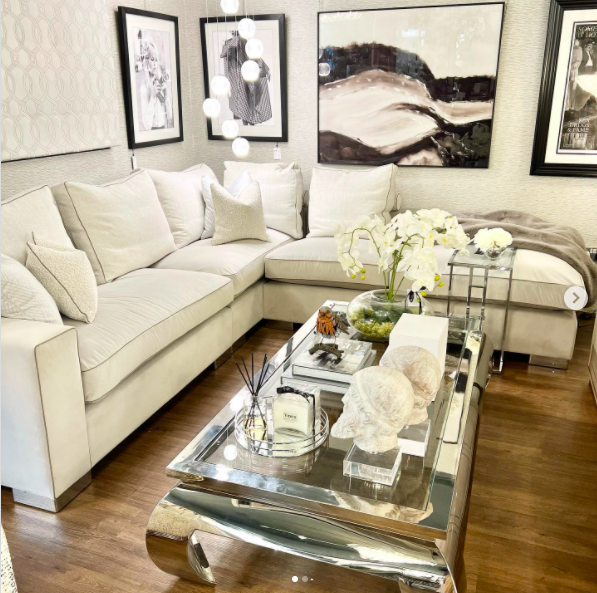
QVALON as your retail display partner
Retail displays give life to your visual merchandising strategy. From the moment you set them up, they must be properly monitored and maintained across your retail outlets.
QVALON helps you right from the implementation to the inspection phase. Simplify your work with our seamless feedback, task automation, and virtual inspection features. Your staff can simply send real-time photos which you can inspect right away, so goodbye expensive travels.
Ready to get started? Book your free demo here.

